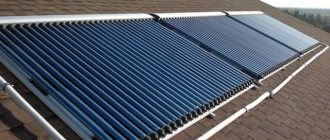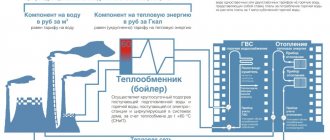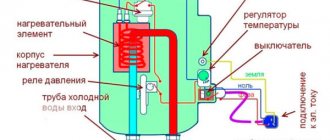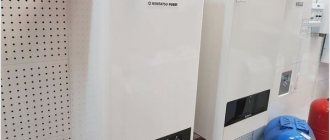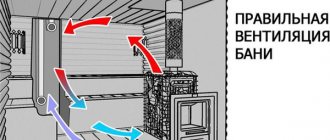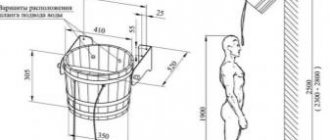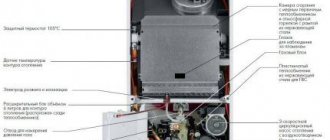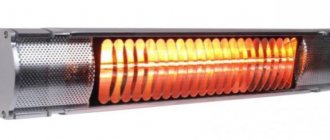The meaning of the abbreviations HVS and DHW, conditions for setting tariffs
Cold water supply and hot water supply stand for cold and hot water supply, respectively. In accordance with legal requirements, the assignment of current tariffs is approved by resolutions of local authorities in the regions, taking into account the following factors:
- presence of water sources;
- distances of water intake points to consumption facilities;
- water volumes;
- suitability of water resources for drinking purposes and costs of necessary treatment.
Although regions are allowed to set their own tariffs, there are federal restrictions that cannot be exceeded.
The consumer can learn more about the size of the established tariffs in the regions by contacting the official portal of local authorities or the energy supplier.
Results
Water heating is an important service provided by the service organization. Payment is made in accordance with the law on hot water supply. The calculation is carried out automatically, but each consumer can check the received calculations. In case of an error, the difference must be compensated by recalculation. An additional column will appear on the receipt.
Housing and communal services receipts for payment of utility services sometimes contain strange names and abbreviations: abbreviations GVS KPU, GVS DPU, etc. This makes consumers nervous and suspicious of tariffs and accrued payments. Regulation of tariffs for hot and cold water supply, as well as sanitation, is carried out by the state, on the basis of Russian Government Decree No. 406, adopted back in 2013. This article contains information in simple words:
- explanation of what DHW KPU (DPU) and water heating are;
- calculation of consumed thermal energy;
- checking the correctness of charges for hot water supply in the receipt.
Thermal energy component
What is this - a coolant component? This is heating cold water. The thermal energy component does not have a meter installed, unlike hot water. For this reason, it is impossible to calculate this indicator using a counter. How, in this case, is the thermal energy for hot water calculated? When calculating the payment, the following points are taken into account:
- tariff set for hot water supply;
- expenses spent on maintaining the system;
- cost of heat loss in the circuit;
- costs spent on coolant transfer.
Important! The cost of hot water is calculated taking into account the volume of water consumed, which is measured in 1 cubic meter.
The size of the energy fee is usually calculated based on the readings of the common hot water meter and the amount of energy in the hot water. Energy is also calculated for each individual apartment. To do this, water consumption data is taken, which is learned from the meter readings, and multiplied by the specific heat energy consumption. The received data is multiplied by the tariff. This figure is the required contribution, which is indicated on the receipt.
How to check if hot water charges have been charged correctly
Housing and communal services receipts for payment of utility services sometimes contain strange names and abbreviations: abbreviations DHW KPU, DHW DPU, water heating service, etc.
This makes consumers nervous and suspicious of tariffs and charges.
Regulation of tariffs for hot and cold water supply, as well as sanitation, is carried out by the state, on the basis of Russian Government Decree No. 406, adopted back in 2013. This article contains information in simple words:
- explanation of what DHW KPU (DPU) and water heating are;
- calculation of consumed thermal energy;
- checking the correctness of charges for hot water supply in the receipt.
Hot water supply: tariff system, control metering devices
First the decoding:
- DHW KPU - hot water supply according to control metering devices;
- DHW DPU - hot water supply via household metering devices.
Hot water control units can be installed in apartments and used as individual metering devices for hot and cold water consumption. The housing and communal services receipt must indicate the readings of both communal and individual meters.
Payment for hot water supply is charged only if there is a central hot water supply, while water is used both as a heat carrier for heating premises and for domestic needs (as hot water).
- If there is hot water in the house, then consumption should be recorded using two general house or individual meters: one is installed on the hot water risers and shows the consumption consumption in cubic meters, the other - on the branch of the heating system and shows the amount of thermal energy consumed in Gcal.
- In houses where there is only cold water, charges for hot water are charged only during the heating season.
- If an apartment uses a boiler or gas water heater to heat water, residents pay for the energy consumed (electricity or gas).
- Some MKD apartments use a dual-circuit heating system: one is connected to the central hot water supply system;
- the other to individual internal water heaters (in case the hot water is turned off).
Tariffs for hot water supply
According to section II, clause 4 of post. No. 406, regulated state tariffs for hot water supply consist of tariffs of the following type:
- for hot water;
- for transportation through the central hot water pipeline;
- to connect the in-house system to the central system (CS) of hot water supply.
How are hot water tariffs set?
Clause 88 of Resolution No. 406 establishes a 2-component tariff for hot water, which consists of a component for cold water and a component for thermal energy (or water heating).
Thus, the cost of hot water Sgw is determined as the sum of the costs of cold water Sxv and its heating (heat energy) Ste:
Sgv = Sхv + Ste (1).
Previously, the cost of hot water was determined by f‑le:
Sgv = Vgv x Tgv (2), where
Vgv - volume of hot water consumed,
Tgv - tariff for hot water (cost of one cubic meter of hot water).
For reference: The cost of one cubic meter of hot water in Moscow in the second half of 2021 was 188.5 rubles per cubic meter.
Attention! If payments for hot water in housing cooperatives or management companies are carried out according to the old one-component tariff for hot water, then residents should not be charged for any water heating!
Calculation of the cold water component
The cold water component is determined:
- at the standard price of one cubic meter (single-rate system);
- at the price of a cubic meter plus the power expended per hour per 1 m3 of water (according to a two-rate system).
That is, the tariff for cold water can also be composed of two components.
If water is taken from a water supply source by some third-party organization that has the right to do so, or is processed to turn it into drinking water, then the tariff for cold water can be set based on the material costs of this organization per 1 m3 of water.
Formula for determining the cost of cold water Sхв used for hot water supply:
Sхв = V x Тхв (3),
where V is the consumed volume, which is removed from the hot water meter;
Тхв - tariff for cold water.
What is thermal energy
Thermal energy is the power required to heat water, measured in gigacalories.
That is, this is the same “water heating” that can be indicated on the receipt as part of the tariff for hot water. It is included in this tariff along with the cold water component, and is not a separate fee.
(Explanation for those residents who are sure that the housing and communal services authorities charge them double fees for hot water).
At the same time, the receipts additionally indicate the fee for cold water, since this is a separate type of utility service.
It was decided to introduce a two-component tariff to take into account energy and transportation costs, as well as heat loss.
In this case, according to the law, only heat losses along the path from the central coolant supply points to the entry point into the houses are taken into account.
That is, no losses from heated towel rails and risers in the premises should be taken into account.
Composition of the thermal energy tariff component
The thermal energy tariff component consists of:
- from the cost of one unit of thermal energy (gigacalories or Gcal), established on a legislative basis;
- financial costs of organizations regulated by the state for the maintenance of central hot water supply from the points of thermal power plants to the point of operational inputs of the zone of responsibility of consumers and organizations;
- the cost of heat loss of one unit of thermal energy (1 Gcal) in pipelines from central heating points to the entrance to the end-user areas;
- cost of water transportation.
Tariffs for thermal energy in the first half of 2021 for residents of Moscow increased by 1.7% and amounted to 1,803 rubles. 24 kopecks for 1 Gcal (supplier Mosenergo). Tariff for hot water by 1.7% - 191 rubles. 73 kopecks per cubic meter m. Tariffs for the second half of the year for heat and hot water: 1864.3 rub. and 198.2 rub. respectively.
How is the thermal energy component determined?
The thermal energy component, according to the decision of the Supreme Court of the Russian Federation dated July 10, 2021, is determined according to regulatory Rule No. 354:
This is the amount of thermal energy spent on heating the volume of water consumed by the consumer, which is determined not by metering devices (KPU or DPU), but by standard indicators of heat consumption for heating.
If we take the amount of energy for heating water as a certain value Qgw, then the cost of thermal energy Ste, at the heat tariff Tte, can be determined by the formula: Ste = Qgw x Tte (4).
In this case, Qgw in the absence of heat consumption metering devices (heat meters) is calculated according to the thermal energy standard per cubic meter of water and the volume of water consumed:
Qgv = V x Npv (5),
where V is the volume of hot water (according to the hot water meter installed on the branches of the heating system);
Npv is the standard for heating one cubic meter of water (on average it ranges from 0.05 to 0.07 Gcal/m3).
How to check the correctness of charges for hot water supply
The cost of hot water is calculated as follows:
- according to metering devices (hot water meters) - they determine the volume of water consumed, and according to f‑le (3) the cost of the first component - cold water;
- using formula (4) for calculating the cost of thermal energy, the cost of the second component is determined;
- add both components.
In addition to the payment for hot water, the receipts indicate the payment for heating, which is calculated according to the readings of communal or individual heat energy consumption meters.
Calculation of DHW if there are no meters
If there are neither communal nor individual meters, then payments for hot water and heating are calculated according to average standard indicators established by regional authorities:
- standard water consumption per person per month (it is inserted into formulas (3) and (5) instead of the volume of water according to the meter);
- standard consumption of thermal energy per square meter of total area;
To determine the cost of heating, it is necessary to multiply the standard indicator of thermal energy consumption by the area of the heated premises of the apartment, and multiply the resulting result by the tariff (the cost of one Gcal of heat).
How to calculate the cost of hot water supply by meters
- The cost of hot water according to a common house meter: the number of cubic meters of hot water consumed per month in the house is divided by the number of residents in the house - you get the average volume of water consumption Vavg. for one person;
- Vavg. insert into the lines (1) - (5) instead of V.
= Vted x Sq/Shouse x Tte, where:
- Vted - the volume of thermal energy consumed by the house per month according to the general house thermal energy meter;
Shouse - the total area of the heated premises of the house;
Hidden charges for hot water supply
Repairs of pipelines, water heaters, filling the system before the heating period, draining coolants and other work are not included in the domestic hot water tariff, but are paid in separate columns of receipts: operating costs, technical work, repairs, etc.
It is very difficult to control utility bills here.
It is due to all these additional payments that the unaccounted profits of housing and communal services and management companies are formed.
There are also proven techniques for installing hidden plugs on the heating system of a house behind the meter, which allows you to reduce the supply of real heat to apartments.
Complaints about housing and communal services and management companies
The controlling body for housing and communal services, housing cooperatives and management companies is the State Housing Inspectorate. This is where residents should file complaints if they think that the payment for hot water supply is too high.
The housing inspection is obliged to consider the appeal and respond to it within a month. If the complaint is found to be justified, GZHI inspectors will inspect the hot water supply in the house.
If the complaint is rejected, you can appeal to the courts by filing a claim with representatives of the housing and communal services, housing cooperatives, HOAs or management companies (depending on the nature of the claim).
Even if the money for hot water supply has been paid, then if violations and incorrect calculations are detected when charging fees by the relevant organizations, the paid funds must be returned to the residents.
Otherwise, the persons responsible for returning the money, on the basis of Art.
395 of the Civil Code of the Russian Federation, will be forced to return the amount of the debt with interest or pay a penalty for failure to fulfill obligations (if the condition for payment of the penalty is contained in the agreement between the parties (suppliers, organizations and consumers).
conclusions
- Hot water supply in apartment buildings can be controlled using metering devices (both individual and communal). Almost all MKDs have meters installed to control the hot water supply of the KPU (DPU).
- Calculation of the cost of hot water consists of two components: the cost of cold water and the cost of heating it
- One receipt cannot contain double charges (for both hot water and water heating), since the cost of water heating is included in the cost of hot water).
Loading…
